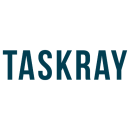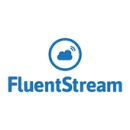In tech, the newness and uniqueness of a product or service is, in many respects, considered in tandem with the company that produced it. If the iPhone 14 and the Apple Watch Series 8 are novel, they’re thought of as the product of a unique and innovative company and culture; if they’re conventional, Apple looks stolid.
Unique tech companies demand unique cultures. They require dedicated people making a concerted and creative effort to build an intentional and collaborative work environment; the kind of environment that prospective employees have come to expect in a competitive job market. To this end, leaders and people organizations go to great lengths to make team-related programs, events and exercises fun, rewarding and novel.
It’s unsurprising, though, that talented people working on the same problem, developing novel ways to nurture company culture, often come to similar conclusions. If Gottfried Wilhelm Leibniz and Isaac Newton could separately and simultaneously discover the foundations of calculus, why wouldn’t even the most inventive company cultures develop striking similarities — even in their most unconventional approaches to developing camaraderie?
Case in point: TaskRay and AdCellerant — two companies whose employees told Built In Colorado that they’ve celebrated recent successes in an uncommon way: by ax throwing.
Ultimately, cultures like AdCellerant’s and TaskRay’s share a common goal beyond making the most exceptional product possible; they also want to celebrate and care for their people. And in a healthy company culture, those goals are by no means mutually exclusive. “Someone may need to take a day off with little notice,” AdCellerant’s VP of Engineering Jonathan Hemnes said. “Whether it be to take care of a family emergency or because a mental break is needed, these requests are never questioned and always encouraged. If someone feels like they need to be working, but their mind is elsewhere, then the employee will burnout, and the work will not be as fulfilling.”
Read on to discover more commonalities and ways in which four exceptional workplaces are attracting and developing tech talent with their forward-thinking approaches to company culture.
TaskRay offers a Salesforce-native work management software solution designed to address post-sale processes such as onboarding, installations and implementations.
What are the key characteristics and values of a good team culture? How does the TaskRay team bring those characteristics and values to life?
One of the things we value the most on this team is the ability to challenge one another. In order to foster that kind of team culture, there must be a foundation of trust, respect and humility. No one person’s opinion holds more weight because of title or rank.
We are an agile team, and our number one goal is to build the best product possible, which means that a truly collaborative approach is not only encouraged but necessary.
No matter what stage of shipping a release we are in, we always hold space to learn about any new information that has come to light and make changes to the plan accordingly. Everyone’s opinion will be heard and considered. At the end of the day, we seek to have a clear understanding of why a direction has been chosen and commit to the path forward together.
In order to foster that kind of team culture, there must be a foundation of trust, respect and humility.”
How do you ensure members of the TaskRay team continue to feel challenged, engaged and excited by the work they’re doing?
We never stop trying to improve the app, which means we never stop learning about new technologies and philosophies. The app is never done. We are always striving for continuous improvement. This ethos gives every team member the opportunity to work on new challenges and to recommend technologies and patterns that interest them.
Additionally, we are a small company, which means that there are a lot of opportunities to try on different hats within the Scrum team and contribute in a variety of ways. We plan out individual growth goals two to four times annually based on each person’s interests and desired career path. We then work to support those growth goals with hands-on projects, training, and opportunities within the company.
If you want to add to your skill set, be challenged and try new and exciting things, TaskRay is a great place for you!
Does TaskRay have any unique team celebrations, traditions or rituals to celebrate successes?
At the end of each release, our retrospective meeting includes questions designed to celebrate team and individual achievements. We reflect not just on areas for improvement but also all the amazing things we accomplished. A culture of kudos persists throughout the company with a very active Slack channel and company-wide meeting agenda focused on recognition.
In addition to creating a culture of praise and appreciation, we also have a lot of fun as a team. Our most recent outing included tacos and ax throwing!
FluentStream’s communication software offers voice, video, text and analytics services to small and medium-sized businesses.
What are the key characteristics and values of a good team culture? How does the FluentStream team bring those characteristics or values to life?
At FluentStream, we have a holistic focus on who we hire and how we interact with each other on our team. No one is just their job description, and no one is ever deemed “not important enough” to be part of a discussion or team. We know our work is important, but we know it’s not as important as the people doing the work; no deadline is more important than the well-being of anyone on the team.
I’ve never been with a company so committed to the relationship formed between team members. Every company wants to make sure that their employees have the necessary skills to do their job, but for us, that goes hand-in-hand with how everyone fits together. We have a scheduled meeting every week that is explicitly designed to not be about work and instead be about social interaction and team building.
What we end up creating is a true feeling of belonging and ownership. We get to help plan and make decisions on the work we are doing, so we feel invested in it. We focus on our relationships, so we feel a part of every success and naturally support each other through our difficulties. We truly feel together in something bigger than ourselves, which I felt even during my interview process.
How do you ensure members of the FluentStream team continue to feel challenged, engaged and excited by the work they’re doing?
We want people to thrive both in their work and life. But someone can’t thrive when they are just surviving. We make sure that everyone is getting the support they need to do their work, and that support ends up taking multiple shapes. Sometimes it’s technical help, answering a few questions. Other times it’s working with a teammate for a few hours to come up with a joint solution.
The more we can help people be energized by the process as opposed to just a finish line, the better off we all are.”
Other times the help is more personal. Someone may need to take a day off with little notice. Whether it be to take care of a family emergency or because a mental break is needed, these requests are never questioned and always encouraged. If someone feels like they need to be working, but their mind is elsewhere, then the employee will burnout, and the work will not be as fulfilling.
Beyond making sure everyone is taking care of their physical and mental health, we also provide opportunities whenever possible for employees to take on new challenges and enhance their skills. We know that the more everyone charts their own direction, the more engaged they will be. The more we can help people be energized by the process as opposed to just a finish line, the better off we all are.
Does FluentStream have any unique team celebrations, traditions or rituals to celebrate successes?
Recognizing success is something that is really ingrained in our culture — to the point where it happens organically. Every month, the development team has a meeting where we focus on a handful of areas: what went well, what needs improvement and what concerns we have. It never ceases to amaze me how the majority of the comments are congratulatory messages to members of the team. It doesn’t even need to be large wins — such as deploying a major new feature — often people are just recognizing someone taking five minutes out of their day to help with a small issue.
I’ve had jobs in the past where a significant amount of my daily tasks felt like thankless chores, and it can feel deflating. But here, the culture of positive feedback and recognition really does make everything feel a bit bigger and more worth doing every day.
AdCellerant gives businesses access to high-quality digital marketing technology and solutions through partnerships with media companies and agencies.
What are the key characteristics and values of a good team culture? How does the AdCellerant team bring those characteristics or values to life?
The foundation of a strong team culture is people collaborating to solve complex problems. Positive culture stems from people being in an environment where they feel like they are challenged. And in addressing that challenge, they can learn from others and help others to learn.
The team must feel secure in the iterative learning process as well. An iterative process means that not every iteration is successful. At AdCellerant, unsuccessful iterations aren’t seen as failures but are celebrated as learning experiences. We constantly work to build and maintain an environment where people are encouraged and supported in their endeavors.
How do you ensure members of the AdCellerant team continue to feel challenged, engaged and excited by the work they’re doing?
The best idea should win, and those good ideas can come from anywhere. This year, for example, we had a new team member recommend rebuilding our component library in a new framework to improve developer experience, increase engineering speed and expose more features to our product organization. That project was immediately approved and is now nearing completion.
The best idea should win, and those good ideas can come from anywhere.”
By allowing all team members to positively impact the organization and the tooling that we work in, our team members will be more engaged and feel confident to challenge themselves and others to solve our unique and exciting problems.
Does AdCellerant have any unique team celebrations, traditions or rituals to celebrate successes?
We believe strongly that success should be celebrated regularly. We can give Karma points to people in Slack, which they can redeem for gift cards, swag and even lunches with other people.
We also make time to recognize hard work and success in retrospectives and engineering-wide meetings, as well as company-wide meetings. For more significant releases and milestones, we make a point to take the whole team out for activities. Our most recent significant release prompted an ax throwing experience!
An insurance technology company, Parsyl delivers data-driven cargo insurance solutions for essential supply chains including vaccines and medicines, perishable foods and other sensitive goods.
What are the key characteristics and values of a good team culture? What are some ways you and the Parsyl team bring those characteristics or values to life?
Lierheimer: Our team is really skilled at creating and maintaining opportunities for continuous learning, holding each other to high standards of work and ultimately taking the work seriously while not taking ourselves too seriously. This looks like reacting to posts with custom emojis we made of each others’ faces, having Powerpoint parties where we can bring each other in on our niche and funny opinions and debating whether we’re too old to incorporate the latest Gen Z lingo into our meetings. It’s easy to help each other out and pull for full-team success when we’re having fun.
Everyone on the team can — and has — nabbed an hour of our time here and there to teach us about something new in our field and keep us all current. We even learned about transformer language models right before ChatGPT was released, thanks to our amazing staff data scientist Alex.
High standards are important; we are trying to disrupt the entire cargo shipping industry, after all. We peer-review each other’s work before releasing it to the general public and keep each other up to speed on what’s happening across different projects. This keeps us all informed and rowing in the same direction.
How do you ensure members of your team continue to feel challenged, engaged and excited by the work they're doing?
McDougal: Mission is everything. We’re a mission-driven company, and we carry that through into the data team. Everyone on the team understands the company mission and how our team fits into it. We also all take ownership of our own work. We set our sprint goals ourselves and move them across the board ourselves. I think this helps us all understand our contributions to the project.
Our team is focused on collaboration, openness and plain-old friendship. We all come from different backgrounds with different areas of expertise, and we like to share our knowledge with each other so that we can all benefit. This includes holding informal knowledge sharing presentations to the rest of the team and even just posting interesting articles to our team channel. Because we have created this environment of learning, we are also quick to ask for help when it’s needed. We also place a big emphasis on chatting about non-work related things. It’s easier to collaborate if we’re friendly.
Does Parsyl have any unique team celebrations, traditions or rituals to celebrate successes?
Lierheimer: Data work seems like it’s really visible, but the reality is that the visible aspects of data work can often be slow-going, and the meat of it is quite behind the scenes. Our team makes a point of letting the rest of the company know in all-hands meetings when a teammate has had a big win or has gone above and beyond. It’s really meaningful to be on a team where we know we have each other’s backs and are cognizant and appreciative of each other’s strengths.














